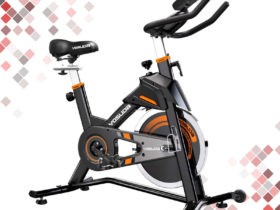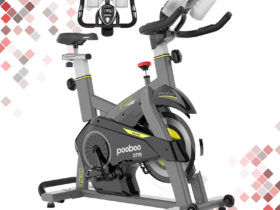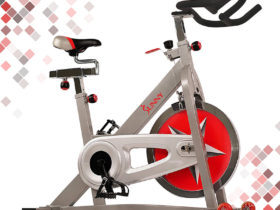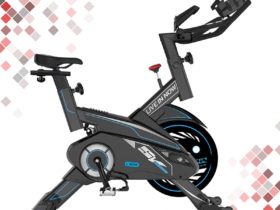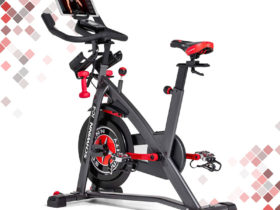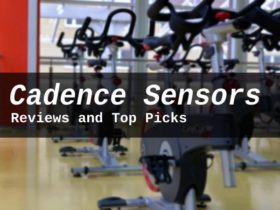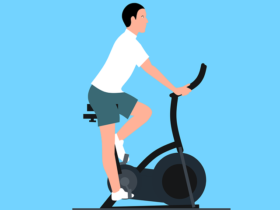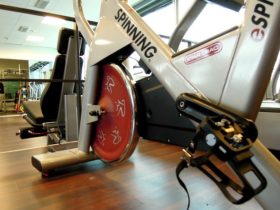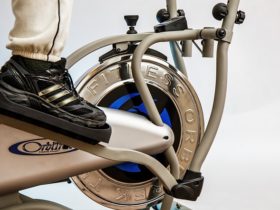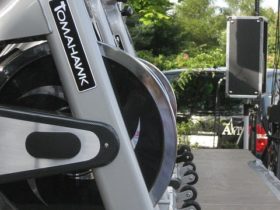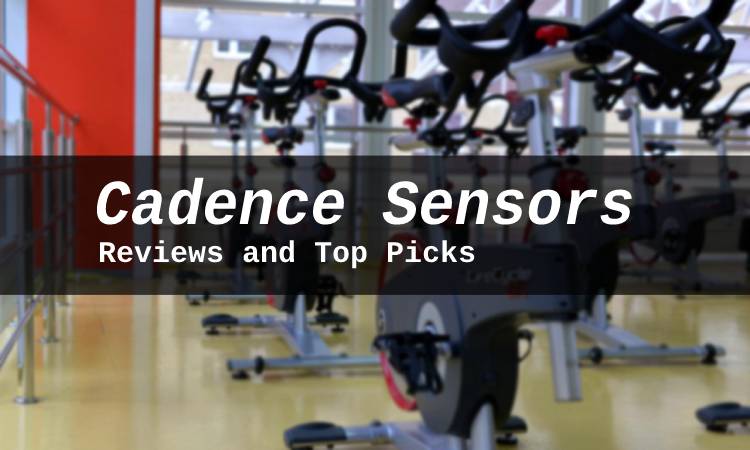The market is filled with different products and just that aspect makes it hard to pick the best cadence sensor for your spin bike. We did the heavy lifting and found the best cadence sensors and speed sensors in the market. We offer you this list of with best cadence sensor available. Some of the best cadence sensors can track speed and cadence sensor information, but most are simple cadence sensors.
While measuring cadence is just counting how many times your legs go up and down in a minute, you might not be as accurate at it, particularly when riding over long distances. Thankfully, you do not have to manually keep track of cadence data.
Pick one of these top-rated cadence sensors and start seeing better workout results.
What is a Cadence Sensor?
As a cycling or spin bike enthusiast, you will likely come across some new jargon. For instance, “cadence,” which is the primary focus of this article. Cadence refers to the number of revolutions your pedal makes per minute when you are riding.
Measuring cadence is important because it helps you track the power you put out when cycling. In turn, this improves your cycling experience significantly and guides you on the amount of power to use in different terrains to maximize results. Riding without a bike computer is like driving your car without a speedometer- it works, but you get a much better experience with a cadence sensor.
Cadence Sensor Types
Speed sensors were previously made by attaching a corresponding sensor to a magnet and a fork on the bike spoke. However, with the advancement of technology, cadence sensors have been invented and are now more commonly used because they give more accurate information.
Cadence sensors measure the number of rotations per minute that the pedal makes and then provides data on how fast the user is pedaling. This information is useful for cyclists because it helps them to maintain a consistent pedaling speed and to avoid over-exerting themselves.
There are two different types of sensors, each with their own benefits.
Motion only sensors are the most basic type of cadence sensor. They collect data on how fast you’re pedaling and how long you’ve been pedaling for.
Speed and cadence combo sensors are the most advanced.. They collect all of the data that sensors only cadence sensors do, but they also include a speed sensor. This allows them to provide information on your average speed, maximum speed, and total distance traveled.
When deciding which type of cadence and speed sensor to buy, consider what type of information you want to be able to track. If you’re just looking to track your cadence, then a motion sensor will suffice.
However, if you’re looking to track your speed, distance, and calories burned, then a sensor only or combo cadence sensor is a better option. No matter what type of cadence sensor you decide to buy, make sure that it is compatible with your bike before making your purchase.
What Are the Components of a Cadence Sensor?
A cadence sensor usually consists of two or three device sets. It can be easily mounted on a bike. You will find two magnets, one used for motion and the other for cadence. These are placed on either side of the electronics pods attached to the frame of the bike. The pod also has two magnetic sensors that record speed and cadence. When you run the cycle at your normal speed, the magnet goes through the magnetic field of the pod, which registers the pod as a rotation.
When you buy a cadence sensor, you must keep an eye on the design. A well-designed unit should be durable and easy to install. Most importantly, it should be accurate in recording your cycling statistics. Whether you are a professional cyclist or a casual bicyclist, a cadence sensor can help you analyze your pedaling performance and improve your pedaling efficiency.
How Does Bluetooth Improve a Cadence Sensor?
Most spin bikes come with some form of cadence sensor already installed, but if yours doesn’t, or you want an upgrade, there are plenty of options on the market. Many of these use Bluetooth technologies to connect to either a bike computer or a smartphone.
The advantage of using Bluetooth is that it is a wireless connection, so there are no messy wires to deal with. It is also relatively easy to set up- most sensors will come with clear instructions on how to do this. Once it is connected, the sensor will start sending data to the device it is paired with, which can then be used to track and improve your cycling performance.
ANT + vs Bluetooth
Deciding between an ANT+ and Bluetooth cadence sensor can be tricky. Both have their pros and cons, and it ultimately comes down to personal preference. If you want to be able to connect multiple devices at once, then ANT+ is the way to go. However, it’s worth noting that the connection may drop every once in a while. On the other hand, Bluetooth allows you to connect only one device at a time.
If you’re planning on using a Juifoft and a heart rate monitor, you’ll need to choose one or the other. Whichever sensor you choose, Zyft will be able to pick up and send your data.
Why Knowing Your Cadence is Important
Having the best cadence sensor is key for anyone who wants to elevate their cycling workouts to the next level. You can use speed and cadence sensors to track and capture cadence details allowing you to pinpoint the areas that require improvements or better overall results. Pedaling at high cadence has been known to build endurance over time. In addition, high cadence cycling also reduces muscle fatigue and reduces the glycogen buildup in the muscles.
Top Cadence Sensors on the Market
You have the top spin bike available, so let’s get the most from it. Having the right sensor is key for anyone who wants to elevate their cycling experience to the next level. You can use this to track and capture cadence details allowing you to pinpoint the areas that require improvements or better overall results. Here is our list of the top 5 that you should consider purchasing.
#1 Wahoo RPM Cycling Cadence Sensor
Most Economical
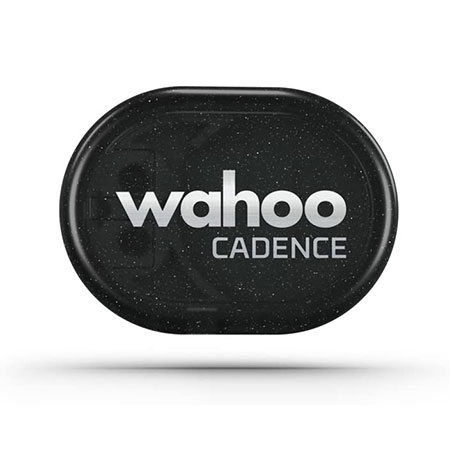

- Tracks and captures cycling speed data in real-time on your Android, iPhone, or Bike computer to give you precise cadence data
- The Wahoo RPM cycling cadence sensor offers a shoe and bike mount that allows you to easily attach it to your bike.
- The sensor is 100% wireless and boasts of ANT+ and Bluetooth which means you do not have to deal with the inconvenience of tangled wires. You can also send data to your favorite 3rd party cycling apps.
- The device comes with a replacement coin cell battery that lasts for about a year with no need to recharge.
The Wahoo RPM cycling cadence sensor is sleek, waterproof, magnet less, wireless, and lightweight. It comes with sophisticated features that allow you to track your cycling cadence precisely in real-time.
#2 Garmin Cadence Sensor 2
Best Buy
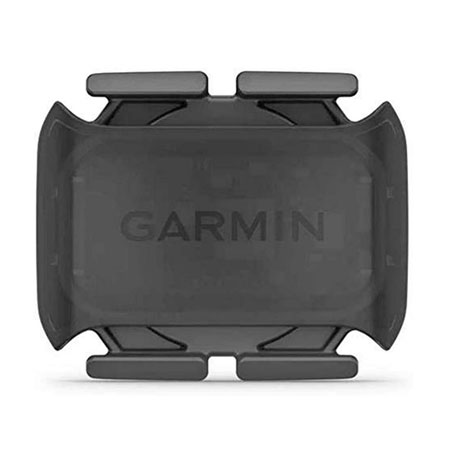

- Features a slim profile that makes it super easy to install on your bike
- Garmin Cadence Sensor 2 measures pedal strokes per minute ensuring you get the most out of your workout.
- You can use the device conveniently both indoors and outdoors
- The sensor is compatible with many Garmin devices as well as other compatible fitness equipment and training apps.
The Garmin Cadence sensor is the product you need when you want to monitor your pedaling cadence. The wireless sensor is not only easy to install, but you can use it smoothly for years with no major maintenance issue.
#3 Tusy 2-in-1 Speed and Cadence Sensor
Multi-Functional
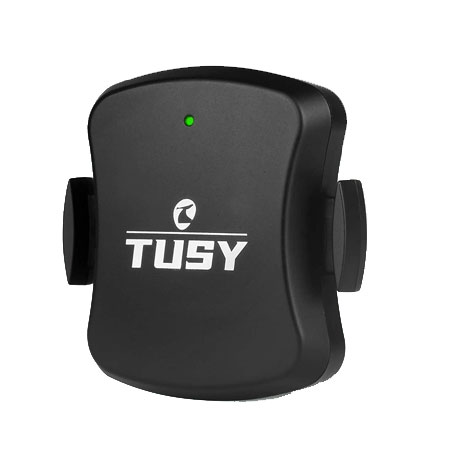

- The Tusy 2-in-1 Speed and Cadence sensor allow you to track speed and cadence data in real-time on your smartphone or bike computer.
- You can install the device within seconds without using any magnets on the wheel hub or the bike’s crank arm.
- The functional sensor is lightweight, tiny, waterproof, and easy to maintain.
- Comes with a battery that will serve you for up to 600 hours.
- It is compatible with major fitness apps like Peloton, Zwift, and Cyclemeter amongst others
The Tusy makes the list of the top 5 sensors on account of its wireless technology. Keep in mind that if you want to monitor both speed and Cadence, you will need to purchase 2 devices so that they can work simultaneously. This said it comes with some pretty decent features that make it a worthwhile investment.
#4 SHANREN Cadence Sensor
Great Value
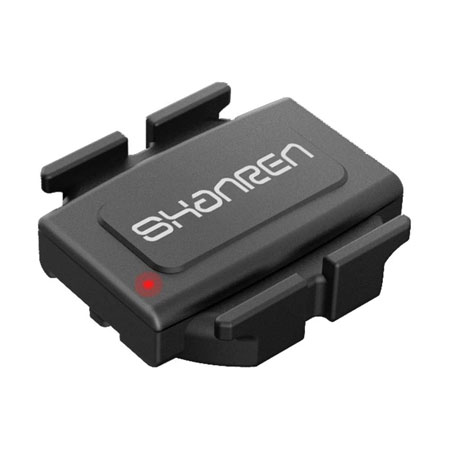

- The device has wireless technology and seamlessly connects to Shanren Sports App available for free as well as other 3rd party apps.
- You do not need magnets or other tools for the installation process, which is super easy and fast.
- The sensor is strong, solid, waterproof, and is built to withstand various elements.
- Easily connects with bike computers as well as indoor trainers
A dual-mode sensor, this incredible top-rated product from Shanren is a great pick when you are looking for an affordable and functional sensor. Created with intuitive Geomagnetic+G-sensor Technology, this facilitates enhanced data accuracy with Auto-stop and Auto wake up.
#5 IGPSSPORT Cadence Sensor
Works Exceptionally Well
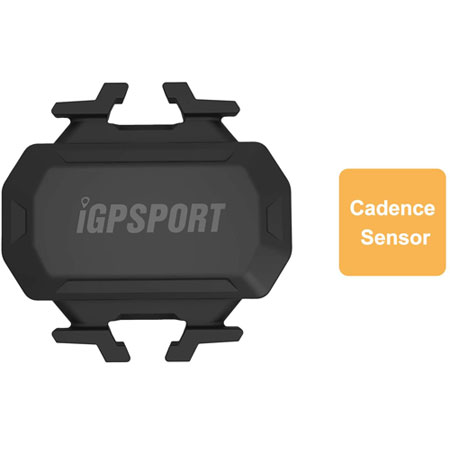

- Ipx7 rating allows you to use the device outdoors even on rainy days.
- Designed to be shockproof offering resistance of up to 1.5 m falls.
- IGPSSPORT cadence sensor is compatible with multiple training devices
- Offers an extended battery life where you can use the device all year through without the need to change it if you are using it at least one hour per day.
Offering hundreds of hours of battery life, the IGPSSPORT Cadence Sensor is a highly sensitive device that has been manufactured to offer you accurate cadence data. The upgraded sensor features ANT+/ 2.4G technology compatible with IGSPORT’s primary cycling computer and other popular cycling apps in the market.
#6 XOSS Bike Cadence Sensor and Speed Sensor
Most Lightweight
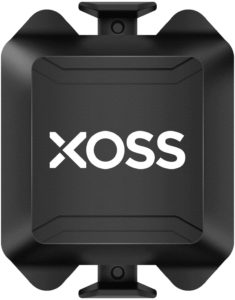

If you want to track your speed and cadence, the XOSS Bike Cadence Sensor & Speed Sensor is a good option. It is versatile and lightweight, and it can be used with devices that have ANT+ protocol. The dual-mode feature lets you switch between speed and cadence tracking. The only downside is that you cannot measure cadence and speed on the same sensor at the same time- you will need to install 2 sensors. Not a big deal, just be aware of this.
The XOSS Bike Cadence Sensor & Speed Sensor is a decent option for tracking speed and cadence. It’s adaptable and lightweight, and it works with devices that have the ANT+ protocol. The speed/cadence switching ability is another nice feature.
- High sensitivity cadence and speed sensor
- Easy to install
- Water resistance: IP67
- Wireless transmission:
- Bluetooth 4.0 BLE
- ANT +
- Unmagnetized
- Compatible with all Bluetooth and ANT + devices
- Compatible with sports social networks such as Strava and Openrider
- Battery: CR2032 button cell with long life
- Usage time: up to 400 hours
- Dimensions: 3.8 x 3 x 1 cm
- Weight: 10 gr (with battery)
- Color: Black
#7 Garmin Speed Sensor 2 And Cadence Sensor Bundle
Top Value for the Money
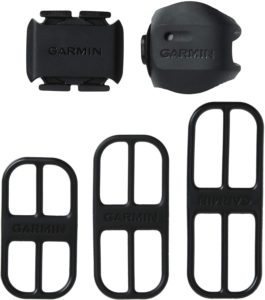

Garmin is a very popular company that makes high-quality equipment for different sports. We knew that when we were looking for a high-quality speed and cadence sensor for our spin bike, Garmin was the best option. Even though their products are more expensive, the quality is well worth it.
We found this Garmin speed cadence sensor and we just knew it would be great. It has a slim profile so you can attach it to your flywheel easily. And it has a self-calibrating feature so you don’t have to do any work.
This bike speed and cadence sensor will help you track your progress and performance during your rides. The ANT+ connectivity makes it easy to connect to your devices, while the Bluetooth connectivity lets you live-stream your data. However, there is one downside- the odometer only works with the speed sensor. Despite this, this is still an excellent tool to have for tracking your rides.
#8 POLAR 910 Spin Bike Cadence Sensor And Speed Sensor
Top of the Line
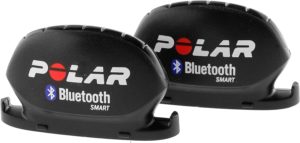

Our choice for the best premium speed and cadence sensors is one that comes with many features. You cannot go wrong with this pick!
This cadence sensor is versatile because it is compatible with many major cycling apps. The Polar 910 sensor is also compatible with Android devices running OS 4.3 and later, as well as most apple devices.
This cadence and speed sensor is very compact, so it can easily fit on most spin bikes. It measures the speed and distance. This sensor also works with Bluetooth technology and does not consume a lot of energy.
Frequently Asked Questions
What does a bike cadence sensor do?
It enables cyclists to measure energy output in the form of RPM (rotations per minute) using accelerometers without any magnets. Some can also determine the speed and distance of a trip based on the bike’s wheel circumference.
How do you track cadence on a spin bike?
You can track cadence manually by counting the number of times your legs push down on the pedal for 30 seconds and multiply it by two. This is not very practical, which is why you should get a cadence sensor that will do the job automatically and give you much more accurate results.
Where do you put the sensor on a spin bike or outdoor bike?
In most cases, you will mount your sensor inside the non-drive side crank arm. Modern devices do not come with any magnets which makes the installation job a breeze. The device will come with a manual that you can use to install the sensor on your spin bike.
Is a cadence sensor worth it?
Absolutely ! It is a worthwhile investment if you want to take better control of the speed of your bike as well as maximize the results of your cycling sessions. Indoor cycling is a great way to keep fit, but it can be difficult to monitor your progress. A cadence sensor helps you to do this by measuring your speed and distance. This means you can keep track of your sessions and make sure you are reaching your goals.
Cadence monitors also allow you to adjust the speed and intensity of your pedaling, so you can always find the ideal tempo to ride.
Which is better speed or cadence sensor?
The speed sensors on bicycles determine how fast and far you have ridden based on the length of the wheel. The tempo sensor only detects rotation in one minute at the wheel, but it is popular to transmit both types of data via a mix of sensors. Ideally the answer is you want both. But if you had to choose one, we recommend the cadence sensor, as the speed sensor isn’t as helpful with indoor spin bikes.
Why Do I Need a Cadence Sensor on My Spin Bike?
The cadence monitor is an essential piece of equipment for any serious cyclist. Once you have chosen the best spin bike for your needs, get the most from your investment with a cadence sensor. It lets you know how fast and far your bike’s wheel is spinning. This can help with staying motivated during workouts or tracking progress over time on indoor spin bikes!
High cadence pedaling has been shown to build endurance because it reduces muscle fatigue as well as avoiding glycogen buildup in our bodies’ muscles. If you want more reasons to use a cadence sensor on your exercise bike, recent research has shown that pedaling at a cadence of 80rpm or more build endurance and burn more calories.
What’s the best way to use a spin bike cadence sensor?
There are many ways to use a cadence sensor, but the best way is to use it in conjunction with a heart rate monitor. This will allow you to see how hard you are working overall.
When used in conjunction with a heart rate monitor, a cadence sensor is an invaluable tool that can help you maximize the benefits of your cycling workouts. By seeing both your heart rate and pedaling speed, you can better gauge how hard you’re working.
Are all Speed Sensors Compatible with My Spin Bike?
If you’re shopping for a spin cycle cadence sensor, it’s important to check compatibility before you purchase. The speed sensor typically mounts on a bicycle wheel hub to measure the wheel’s rotational speed. This speed is then multiplied by the wheel’s size, which will give the reading of the speed.
However, spin bikes come with a solid flywheel that often doesn’t provide access to the hubs. Therefore, the readings from the speed sensor become tricky to measure.
This is why it is paramount that you check the sensors’ compatibility with your spin bike before you purchase one. By taking this extra step, you can ensure that you’ll be able to get accurate readings from your sensor and make the most of your spin bike workouts.
Is it Hard to Mount Cadence and Speed Sensors On A Spin Bike?
Most cadence monitors come with mounting hardware that makes attaching the sensor to the bike a breeze. If you’re mounting the sensor to an exposed flywheel, simply attach the magnet to the flywheel using the adhesive mounting plate. For spin bikes that don’t have an exposed flywheel, you’ll need to get creative in finding a way to attach the magnet. Learn more about the features and design on indoor cycling bikes.
A good mounting option is to zip-tie the magnet to one of the crank arms. Once the sensor is mounted, simply sync it up with your device of choice and you’re ready to start pedaling!
At a Glance: Our Top Picks for the Best Cadence Sensor 2022


- SHANREN Cadence Sensor


- Wahoo RPM Cycling Cadence Sensor


- Garmin Cadence Sensor 2


- Tusy 2-in-1 Speed and Cadence Sensor


- iGPSPORT Cadence Sensor
Conclusion
If you want to improve your cycling performance, a cadence sensor is a must-have. A bike computer with a cadence sensor can help you track how many pedal strokes per minute you are doing. This will help you adjust your pedaling as needed. We highly recommend checking out our top recommended cadence and speed sensors to find the perfect one for you!


